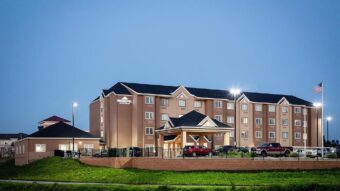Gene therapy, artificial intelligence and other innovations in healthcare promise to bring about longer lifespans and better health outcomes. As these segments are forecast to grow by as much as 37 percent annually in the next five years, they will also drive up demand for lab space, diagnostic centers and healthcare facilities.
According to new Cushman & Wakefield research, the National Institutes of Health (NIH) combined with venture capital and corporate R&D to invest an estimated $125 billion in the pharmaceuticals and life sciences sectors in 2018. This growth comes with it the need for well-educated talent and new, cutting-edge research facilities.
“With a growing and aging global population, the life sciences sector is seeing more capital investment and scientific advancement than any time in history,” said Greg Bisconti, Cushman & Wakefield executive director and leader of the firm’s life sciences advisory group. “We expect this decade to be transformative on many levels, but primarily genomics and specialized and personalized medicine.”
Though there may soon be an economic correction, the life sciences industry tends to tolerate down markets better than other sectors. The Cushman & Wakefield report tracked 146 million square feet of lab space across 14 major markets, including Chicago, and estimates another 12 million square feet will be delivered just in the next two years.
“The [Chicago] metro area continues to be attractive to the life science industry for two key reasons—Chicago boasts a multitude of life sciences-oriented research and educational institutions that provide a consistent pipeline of talent and innovation,” said Jonathan Metzl, managing director, in Cushman & Wakefield’s Chicago office, “and secondly, the city’s cost of doing business is significantly lower than peers like Boston, Los Angeles and San Francisco.
Chicago has long been a major player in the life sciences and healthcare marketplace. Northwestern University, the University of Chicago and the University of Illinois at Chicago combine for over $2.6 billion in NIH funding. However, Chicago and its suburbs are also home to some of the world’s leading pharmaceutical and biotechnology companies.
Big pharma firms with a presence in the Chicago area include Abbott Laboratories, Abbvie, Astellas, Fresenius Kabi, Horizon Therapeutics, Pfizer and Takeda. Global medical device and diagnostics companies like Baxter International, Hill-Rom Holdings, Medline Industries and Vyaire are also located here.
“Along with major industry presence, Chicago is also an incubator market, with many life sciences startups spinning out of university research,” Metzl said.
Rosalind Franklin University of Medicine and Science in North Chicago, Illinois is developing a three-building, 100,000-square-foot Innovation and Research Park that will help academic and industry scientists collaborate with innovators and entrepreneurs. The University of Illinois System recently unveiled the details of its Discovery Partners Institute, which will be located on Related Midwest’s ambitious master planned project, The 78.
Life science startups that germinated in university research initiatives include Apintyx, Exicure and Pyxis Oncology. But the public sector isn’t alone in fostering a life sciences industry in the Chicago area; a healthy development pipeline promises to offer up life sciences and healthcare properties to the investment community.
In fact, Chicago regularly ranks as the top metro for venture capital returns, which should continue to attract further VC funds. Looking to capitalize on this, Sterling Bay’s Prysm Life Sciences will act as a catalyst for a sustainable and scalable life science community in Lincoln Park, helping to retain talent and recruit major life science and healthcare institutions.
Chicago’s top VC-funded life sciences companies last year included SkinCure Oncology, which raised $30 million in its third round, and Tract Therapeutics, which raised $15 million in its initial round. Level Ex, a mobile gaming company that targets the healthcare industry, raised $7 million and recently expanded its office footprint in a relocation from River North to the Loop.
“Employment growth and resilience suggest that powerful drivers such as an aging population, rising investment in research and rapidly evolving technology are likely to support and enhance values of life sciences properties,” Bisconti said. “This generally involves a long-term strategy and sophisticated investor due to both the return characteristics of the asset class—outperforming over the course of full cycles—and also because the asset are operationally complex, increasingly specialized, heavily regulated and dependent on sustained relationships with health systems, end users at various stages of growth and organizations such as the NIH and venture capitalists.”




